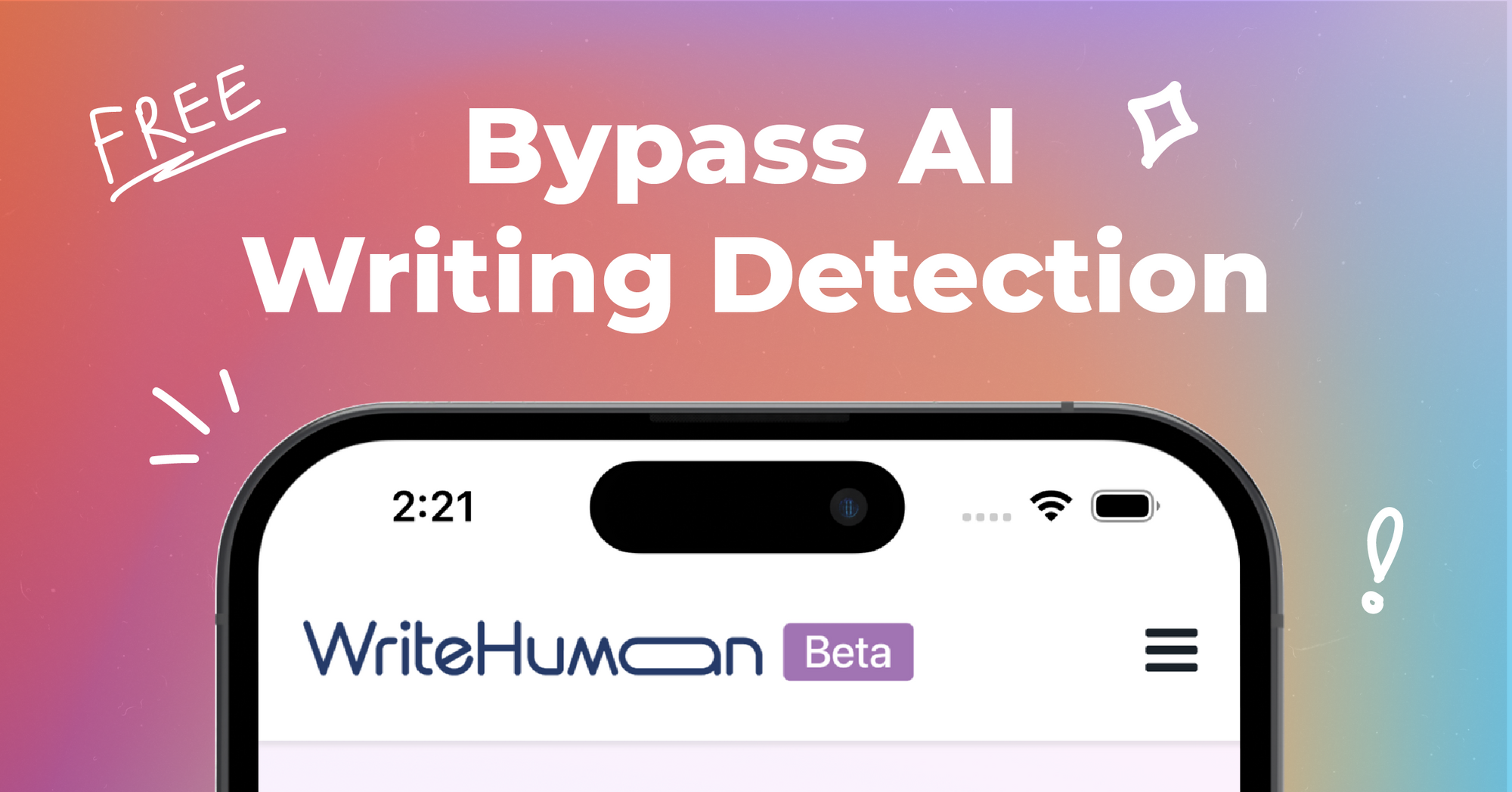Essential Tips for AI Rewriting: From AI to Human Writing
In the age of AI-driven content, how do we elevate digital writing to reflect human depth, nuance, and emotion? The answer lies in blending the prowess of AI with the heart of human touch.

In today's digital age, artificial intelligence has revolutionized the way we produce content. From research articles to social media posts, AI's vast capacities have made content creation a breeze. However, one consistent challenge remains: ensuring that AI-generated content resonates authentically with human readers. How do you take the efficiency of an AI and give it a touch of genuine humanity? Let's unravel the art of rewriting AI outputs to achieve just that.
1. Understanding the AI Mindset
The Birth of Binary Thought: Artificial intelligence, at its core, is about patterns, algorithms, and data. It's crucial to comprehend that AI does not think or process information in the same way humans do. While our thoughts are shaped by emotions, experiences, culture, and education, an AI operates in a realm of binary - zeros and ones. This binary architecture, while incredibly efficient, lacks the intricate nuances that the human mind brings to content creation.
Why This Matters: When you're faced with AI-generated content, understanding its origin is the first step in the rewriting process. Recognizing that this content comes from a data-driven, pattern-recognizing algorithm rather than a thinking, feeling entity will help you approach the text from a more critical perspective. It will guide you in identifying areas that may sound repetitive, lack emotional depth, or miss human-centric references.
Key Takeaway: To successfully rewrite AI-generated content, we must first speak its language. By decoding the AI's binary thought, we are better equipped to inject the missing human essence into the narrative.
2. Focus on the Opening
The Power of First Impressions: In content creation, the introduction is analogous to a first impression during a job interview or a first date. It's a glimpse, a brief window of opportunity to captivate your reader's interest. If your introduction feels cold, technical, or too formulaic – which is often the case with AI outputs – you risk losing your audience from the get-go.
Crafting A Magnetic Start: To transform an AI-generated introduction, aim to evoke curiosity. Instead of merely presenting facts or figures, ask a probing question, share an intriguing fact, or narrate a short anecdote. Your goal is to make the reader pause and think, "I want to know more."
Key Takeaway: AI openings are boring, write that yourself. A compelling introduction sets the tone for the entire content piece. Reshape your AI-generated opening into a doorway that beckons readers into a world of intrigue and insight.
3. Inject Emotion and Personality
Why Emotion Matters: Humans are emotional beings. We remember stories that make us feel – whether it's joy, sorrow, anger, or inspiration. Emotions act as hooks, anchoring content in our minds long after we've consumed it. AI, by nature, lacks this emotional compass, which can make its content come across as sterile or distant.
Humanizing Your Content: As you review AI-generated material, focus on the narrative's emotional arc. Where can you introduce elements that tug at heartstrings or ignite passion? Consider using emotive adjectives, crafting vivid imagery, or sharing personal experiences that readers can resonate with. For instance, instead of saying, "Many people face this issue," you could write, "Sarah, a single mother of two, grappled with this challenge every night, the weight of it pressing down on her."
Key Takeaway: Emotion is the language of the soul. To truly connect with your audience, weave emotional threads throughout your content, ensuring that your narrative doesn't just inform, but deeply moves.
4. Harness The Power Of Anecdotes
Stories: The Heart of Human Connection:Since ancient times, storytelling has been a foundational element of human culture. Whether we're gathered around a campfire or a digital screen, stories captivate us, create shared experiences, and foster deeper connections. AI, although advanced, often lacks the innate capability to weave stories that resonate on a personal level.
Crafting Compelling Anecdotes:When revising AI-generated content, consider embedding anecdotes that illustrate your points. These don’t have to be lengthy or overly detailed. A brief story, perhaps of someone who benefited from using a paraphrasing tool or faced challenges with AI detection, can make your content more relatable. For example: "Jack, a passionate writer, once submitted an essay only to be flagged by AI detectors. Disheartened but undeterred, he sought solutions, leading him to explore the world of AI-proof rewriting."
Key Takeaway:Anecdotes breathe life into content. They transform abstract concepts into tangible, relatable experiences that linger in the reader's mind.
5. Strengthen Your Call-to-Action (CTA)
The Powerhouse of Engagement:CTAs aren't just about concluding an article; they're about inspiring action. They're the bridge between passive reading and active engagement. AI-generated CTAs might be clear and concise, but they often lack the persuasive punch that drives action.
Crafting a Magnetic CTA:Go beyond generic phrases like "Learn more" or "Click here." Infuse your CTA with a sense of urgency, benefit, or curiosity. For instance, instead of "Try our rewriter tool," you might write, "Elevate your content from robotic to riveting. Experience our rewriter today."
Key Takeaway:Your CTA is the climax of your content journey. Make it memorable and compelling enough to inspire your readers to take the next step.
6. Add Value Through Supplementary Content
Deepening the Content Experience:Readers today are inundated with content everywhere they turn. To stand out and truly add value, it's essential to offer more than just the main content. Supplementary materials can enrich the reader's experience and make your content more impactful.
Incorporating Added Layers:Consider embedding infographics, charts, or even interactive quizzes related to the topic. For a site like WriteHuman.ai, a side-by-side comparison of AI-generated content and the "human-perfected" version can be incredibly insightful. Interactive elements like "before and after" sliders or quick polls about readers' experiences with AI content can also boost engagement.
Key Takeaway:Supplementary content isn't just about aesthetics or interactivity. It deepens the reader's understanding, reinforces your main points, and provides a multi-dimensional content experience.
7. Dive into Niche Specificities
Broad Strokes vs. Finer Details:While AI is superb at producing general information, it can often miss the intricacies and subtle nuances of niche topics. Human expertise, on the other hand, thrives in these detailed spaces, illuminating the finer points that AI might overlook.
Navigating the Niche Landscape:When working with AI-generated content within a specific niche, always layer in the depth that comes from expertise or firsthand experience. Say you’re discussing the intricacies of rewriting in the academic realm; discussing the subtle differences between MLA, APA, and Chicago referencing styles will show depth and insight.
Key Takeaway:Embracing the niche means diving deeper than surface level. It’s where your content can truly shine, reflecting expertise and offering value that generic information cannot.
8. Use Authentic Human Feedback
Beyond Algorithms: The Human Touch: Even the most sophisticated AI cannot replicate the unique perspectives, emotions, and experiences of real humans. To truly refine and elevate your content, human feedback is invaluable.
Incorporating Authentic Insights: Consider creating a feedback loop where real users or colleagues can offer critiques on AI-generated content. They might point out areas that feel robotic, lack clarity, or don't resonate emotionally. For example, while an AI might technically describe the process of rewriting to avoid detection, a human can share the frustration, the trial and error, and the satisfaction of finally crafting undetectable content.
Key Takeaway: Genuine human feedback provides a compass, guiding revisions and ensuring content not only informs but also connects on a deeper emotional level.
9. Update Content Regularly
The Fluidity of Digital Landscapes: In our rapidly evolving digital world, what’s relevant today might be outdated tomorrow. AI can churn out content based on current data, but it doesn't always capture the ongoing shifts and nuances in real-time.
Staying Ahead of the Curve: Periodically review and update your content, especially in sectors that see frequent changes. This ensures your audience always receives the most current and accurate information. If, for instance, there’s a major breakthrough in AI writing detection, your content on WriteHuman.ai should reflect this, offering readers the latest strategies and insights.
Key Takeaway: Consistent content updates keep your platform fresh, relevant, and a step ahead, solidifying your position as a trusted authority in your domain.
10. Encourage Community Participation
The Power of Collective Wisdom: There's a unique dynamism in community-driven content, where diverse perspectives converge, resulting in richer insights. While AI can simulate interaction, genuine community dialogue brings unparalleled depth and breadth to any content.
Fostering a Vibrant Community: Integrate comment sections, forums, or even weekly discussion threads on your platform. For instance, you could host a monthly "Redefining Rewriting" roundtable where users share their challenges and solutions with AI-generated content. Such activities not only provide authentic human insights but also foster a sense of belonging and engagement within your user base.
Key Takeaway: By nurturing community interaction, you transform your platform from a mere information hub to a thriving ecosystem of shared experiences and collective growth.
11. Be Transparent About AI Integration
Building Trust Through Transparency:In a world growing ever skeptical of AI's pervasiveness, clarity about its role in your content creation can set you apart. Trust isn't just about accuracy; it's about honesty.
Clear Communication is Key: Clearly delineate which parts of your content are AI-generated and which sections have been crafted or refined by human touch. On WriteHuman.ai, for example, a simple marker or different font could distinguish between the two. This transparency fosters trust, as readers appreciate the honesty and can better gauge the content's authenticity.
Key Takeaway: In an era of deepfakes and misinformation, clear demarcation between AI and human-crafted content becomes a beacon of trust and credibility.
12. Integrate Real-World Case Studies
Tangible Proof in a Digital World: While statistics and generalized information provide a foundation, real-world examples offer tangible proof. They help readers visualize the impact, relevance, and applicability of your content.
Showcasing Successes and Lessons: Consider sharing case studies of users who've successfully employed WriteHuman.ai to refine their content. A narrative detailing a college student's journey from receiving AI-detected plagiarism warnings to creating undetectable, original essays using your platform can be both inspiring and persuasive.
Key Takeaway: Case studies not only validate your platform's efficacy but also humanize the experience, bridging the gap between abstract solutions and tangible outcomes.
Final Thoughts
The rise of AI in content creation heralds an era of efficiency and vast potential. However, the human touch will always remain irreplaceable. As we blend the strengths of AI with human emotion, context, and creativity, we not only elevate the quality of our content but also forge a deeper connection with our readers.
By following these essential tips, you can seamlessly transform AI-generated content into pieces that echo with authenticity and warmth, ensuring that your message isn't just read but genuinely felt.
Or you could just use WriteHuman.ai.
Written with ❤️ using WriteHuman.ai


Comments ()